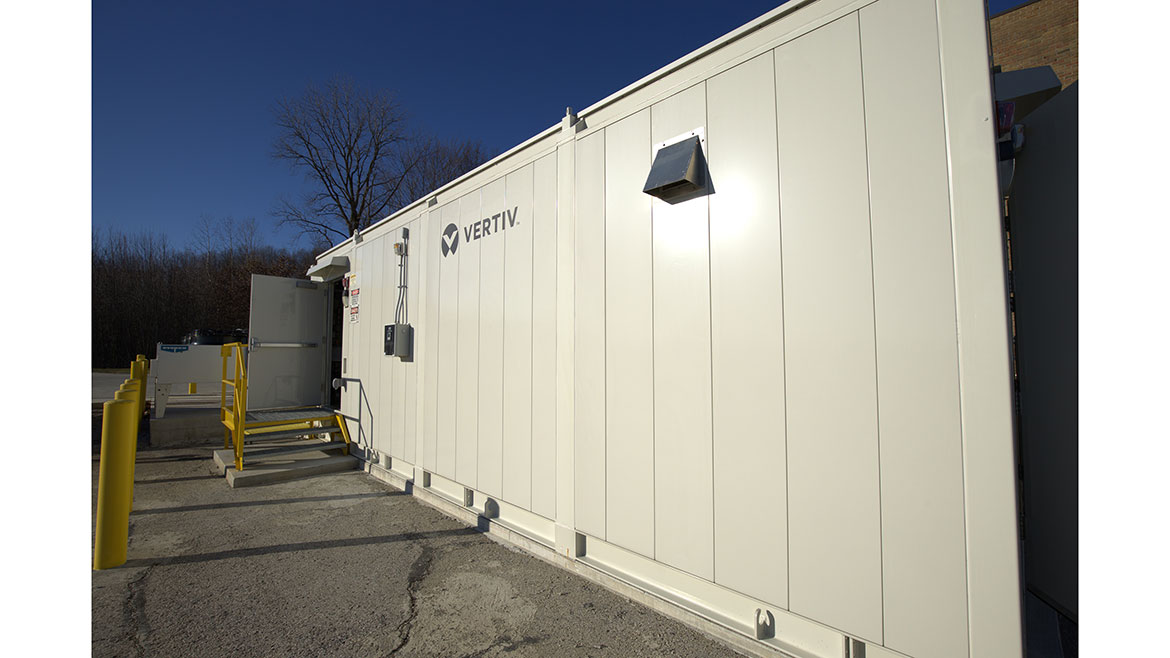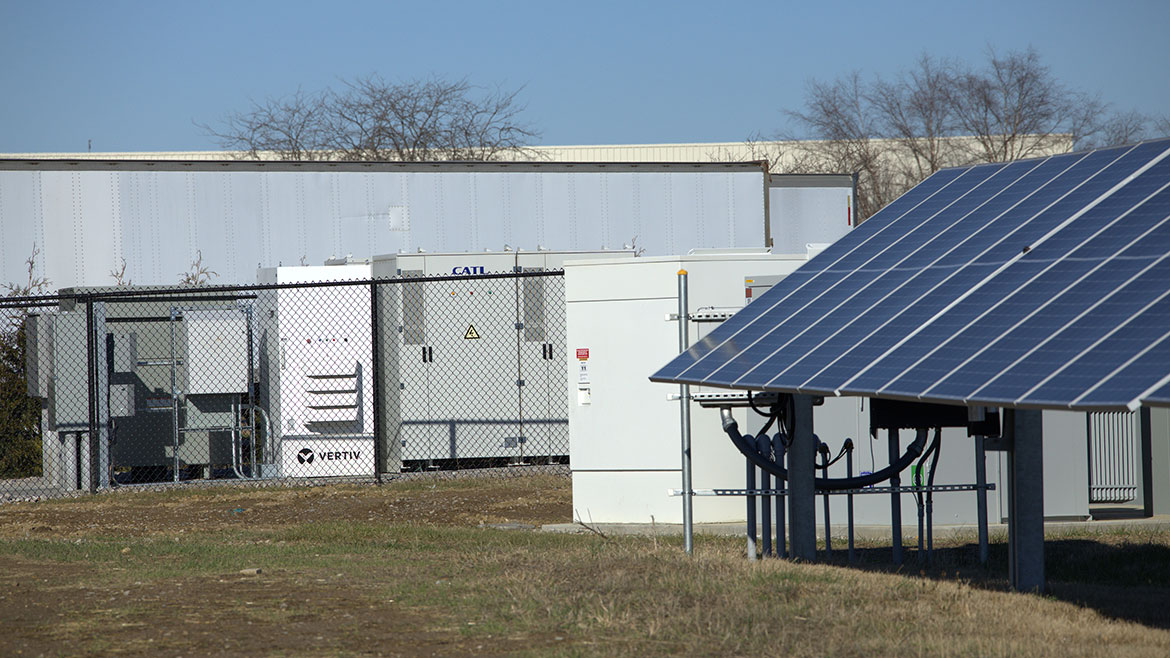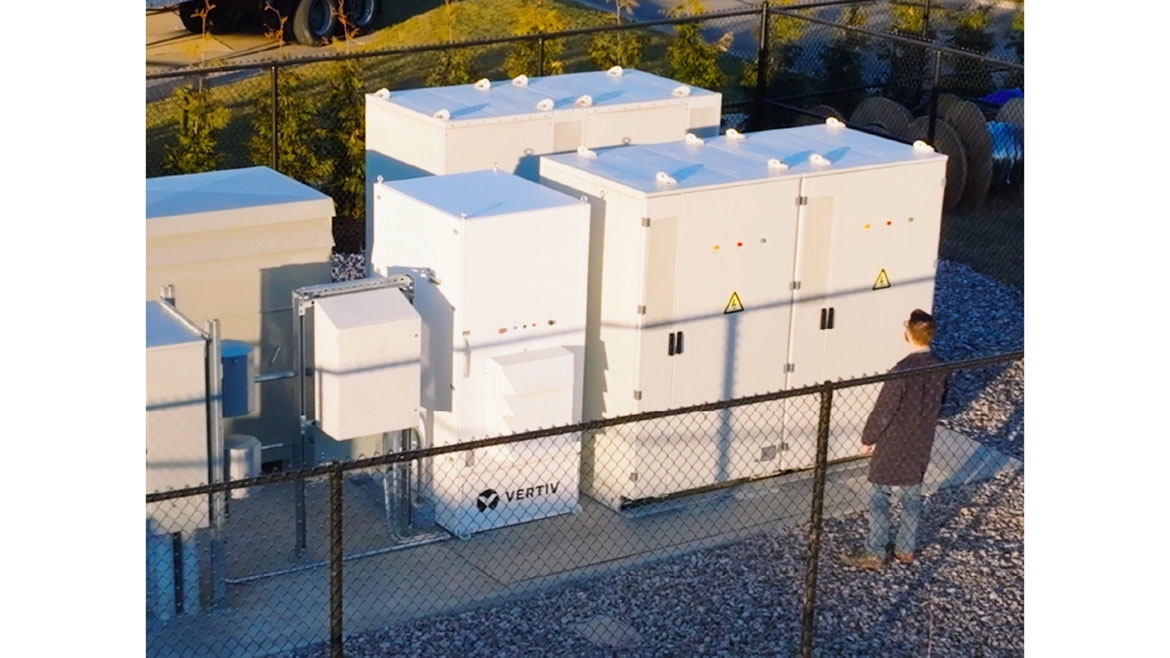Leveraging microgrids and alternative energy sources to support mission-critical applications
The intermittency of alternative energy creates challenges for always-on applications.

An interior view of a fuel cell in a mission critical application. All images courtesy of Vertiv.
As grid infrastructure evolves, it has become increasingly important for mission-critical facilities to find reliable sources of energy that can handle significant events or fuel access restrictions.
Always-on assets such as energy storage systems and distributed energy resources provide an improved solution with increased reliability and efficiency. Because these assets are always-on, the system allows for higher uptime and can leverage various sources of fuel, including natural gas, sun, wind and energy storage for increased reliability. In the modern grid, the majority of outages are under 5 minutes — well within the range for energy storage systems to reduce generator starts.
In this article, learn how microgrids, battery energy storage systems (BESS) and fuel cells can work together to enable mission-critical facilities to have an independent power source.
When used within a microgrid, these always-on power assets can not only provide greater efficiency and reliability, but they may, in some cases, also allow organizations to monetize the daily energy supply in ways that traditional sources can’t. Therefore, microgrids give businesses an intelligent, transparent way to manage their always-on energy assets, also known as distributed energy resources (DERs), in ways idle generators can’t match. Microgrids can rely on any number of energy sources for local power generation, including UPS, BESS, solar panels, thermal energy storage, combined heat and power, wind power, fuel cells and reciprocating engine generators.

As grid infrastructure evolves, it has become increasingly important for mission-critical facilities to find reliable sources of energy that can handle significant events or fuel access restrictions.
An introduction to BESS technology
A BESS is often comprised of battery cells arranged into modules and connected into strings to achieve the desired DC voltage. The collected DC outputs from those strings are routed to a bi-directional inverter, or a power conversion system (PCS). The PCS converts the power to AC and then routes it through transformers and switchgear where it can be used as a grid. Many types of energy storage are undergoing development to improve efficiency and reduce cost, but batteries continue to experience the most significant decline in costs. Electric vehicles (EVs) also use these battery cells as mobile battery systems, and the proliferation of EVs is driving down the cost of those batteries. Controls are another crucial component, as they decide where the energy is sourced from, as well as when and how much energy is needed to ensure success.

Connecting a fuel cell microgrid in the primary source configuration can help mission-critical businesses save on energy costs, bolster efficiency, guard against a loss of revenue due to short or long outages, and provide resiliency.
Using a BESS in a microgrid
The synergistic benefits of combining a BESS with a microgrid is known as “value-stacking.” This is when two or more strategies are leveraged at the same site, and the applications are typically implemented by a microgrid controller. Here are a few examples:
- Peak demand reduction: Utility companies offer demand reduction programs that incentivize facilities to reduce electricity consumption during peak periods. In critical power environments, it’s impractical to participate in these types of programs unless power can be supplemented from a microgrid or other additional source. A BESS can be charged slowly during periods of low demand and low time of use (ToU) rates and then discharged during peak demand periods to provide all power to the facility, avoiding the use of grid power. Combined in the context of a microgrid, peak demand reduction can be done without using diesel generators and other fossil fuel-burning assets.
- Spinning reserve: For microgrids relying on multiple generators to serve the load, because the load will fluctuate, generators are sized in increments to serve various stages of load need. When the overall load is low, the first stage of generator capacity kicks in. When it requires additional power, the second stage of generator capacity will activate. This strategy presents a dilemma: gas generators have a preferred efficiency window to optimize efficiency and fuel consumption. The optimal window is usually around 40%, so if an additional generator is cycling on and off, it reduces efficiency, consumes more fuel, produces more emissions and adds stress to the generator. However, combining a BESS with the generator, it can serve the additional marginal load before activating another generator and ensures the generators are kept within their optimal efficiency windows.
- Stiffening Sources. Some spikey high-performance compute (HPC) AI loads may destabilize sources, especially generators. This is because HPC loads often start at a low load level and step rapidly to a high load level, in some cases to an overload level, with high rate of change. This may cause the sources to droop in voltage and frequency on the step up and overshoot on the step down. These spikey loads can also be non-repetitive. These pose a destabilizing challenge to the source.
Fuel cells in a microgrid application
Often, fuel cells are powered by the underground natural gas pipeline if they are solid oxide fuel cell (SOFC) type, or by hydrogen if they are polymer electrolyte membrane (PEM). When there is a hydrogen source, they offer long-term backup. Fuel cells can also be connected on the primary source side of a mission-critical distributed energy system (DES) — allowing mission-critical businesses to perform critical elements of their business.

Until utility grids in most regions can provide 100% renewable power to all customers, power generation using wind or solar isn’t practical for most mission-critical sites. Furthermore, the intermittency of alternative energy creates challenges for always-on applications.
Connecting a fuel cell microgrid in the primary source configuration can help mission-critical businesses save on energy costs, bolster efficiency, guard against a loss of revenue due to short or long outages and provide resiliency. Here are examples of these applications:
- Pairing fuel cells within a DES. Fuel cells are slow to respond to load changes, which creates transients and requires them to find a way to dissipate the excess energy. This can be done through a grid connection to a BESS. By configuring the fuel cells, the BESS and any other DER in parallel with each other and the fuel cells can dissipate excess energy resulting from load changes by storing energy in the battery system. This configuration allows the system to avoid transferring the load to the backup power source or restricting it. Instead, the system transfers the load to the batteries when an outage occurs. The BESS coordinates its state of charge (SOC) with the fuel cell to optimize for the power output charging or discharging based on current demand from the grid. Like any renewable source, a fuel cells output is “firmed up” by the coordination with the BESS to help it become or act more like a prime power system.
- Proposed microgrid point of electrical service as a primary source. Fuel cell microgrids can also be incorporated in the primary source capacity of a mission-critical business electric system, alongside the utility grid. When outages occur, fuel cell microgrids can carry the load. While backup power must still be available, this reduces the need to run on backup generators in the case of a grid outage. It also helps mitigate the risk of diesel supply issues in the case of longer outages.
- Pairing fuel cells with a UPS. Fuel cells can be thought of as continuous duty batteries. In the same way UPSs use short duration batteries to bridge between sources the UPS can use fuel cells to run from a longer time, even continuously. This “bottom less” UPS can dramatically reduce generator starts and provide a path to carbon free local energy generation.
Until utility grids in most regions can provide 100% renewable power to all customers, power generation using wind or solar isn’t practical for most mission-critical sites. Furthermore, the intermittency of alternative energy creates challenges for always-on applications. Providers like Vertiv are piloting microgrid hybrid systems consisting of fuel cells that can generate energy and have grid-interactive capabilities, so that more organizations can rely less on the grid as well as help reduce the overall strain on the grid.
Looking for a reprint of this article?
From high-res PDFs to custom plaques, order your copy today!







